Gratitude
a transdisciplinary data and fiber art study in virtue development
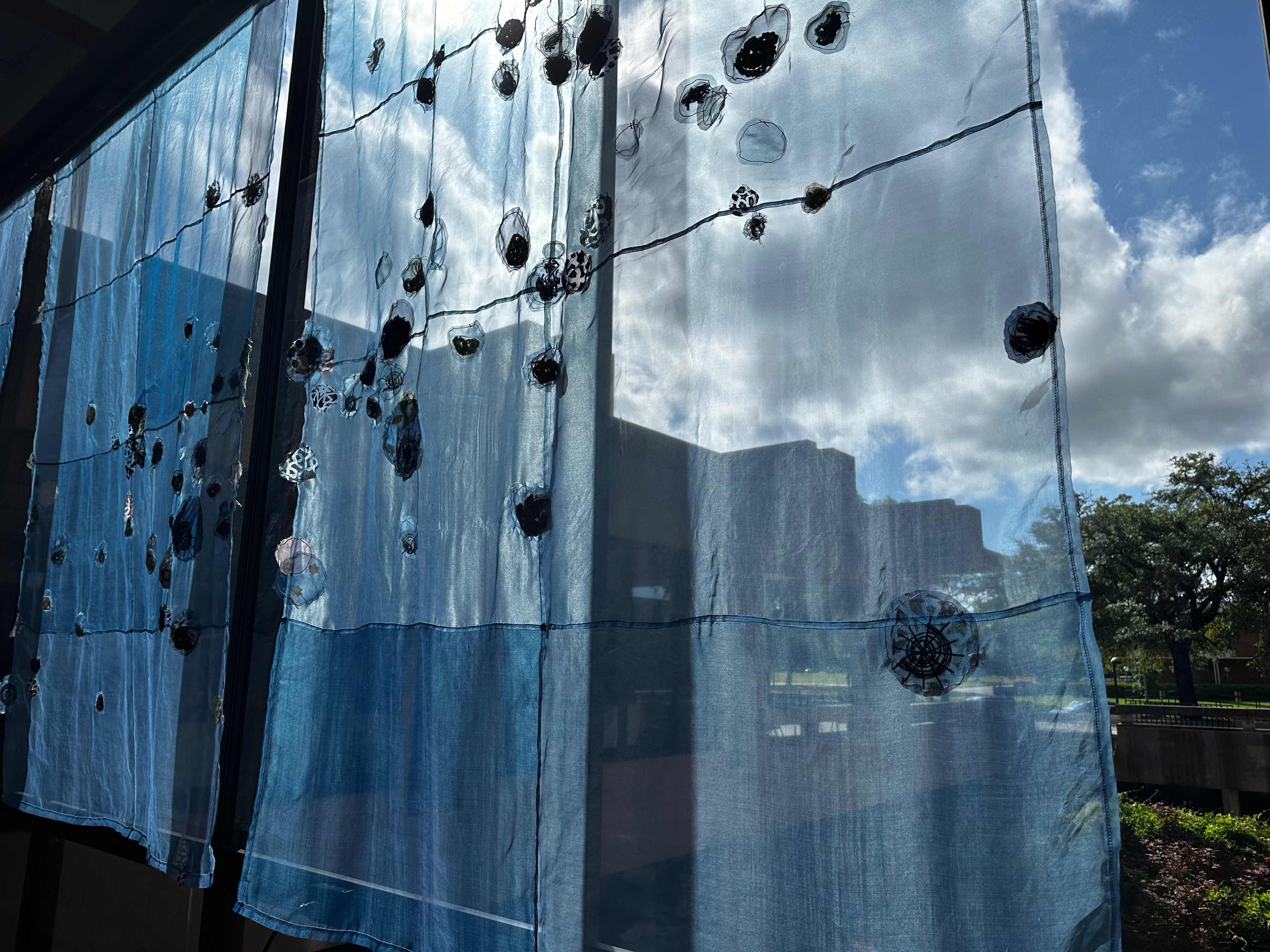
This installation is the result of a collaboration between a non-woven fiber arts class, a sustainable set development course, and data visualization. The panels, basket, and tufted rug embody data of virtue development. Design elements were constructed using the fiber art processes of sewing, natural dyes, crochet, basketry, and tufting, to embody the individuals represented in the data.
The Data
As you walk through this space you are viewing 239 Muslim adolescents’ lived experiences over the span of 66 days as they reflect on virtues including gratitude to Allah and to the people in their community. Dr. Merve Balkaya-Ince designed and administered a survey about the role of Ramadan in Muslim youth’s virtue development. The Family and Youth Institute, a nonprofit that focuses on the mental health of Muslim Americans recruited adolescents around the country to participate in the survey.
The survey explores how Ramadan promotes virtue development in Muslim youth. Ramadan is a central part of the Islamic faith. During the month of Ramadan, Muslims are invited to fast from food and drink during daylight hours. Fasting and praying communally fosters gratitude within and beyond Muslim communities. The month culminates in Eid-al-Fitr. In the process of exploring the dataset, our design team centered in on gratitude to Allah and community as a central theme to embody.
The Installation
We want to welcome you into this space to consider the complexities of the Islamic faith and its believers and contemplate the interplay between gratitude to community and gratitude to the divine.
The space is designed as an embodied lantern. During the day, light will be projected inward from the sun, moving shapes across the floor throughout the day. At night, light will be projected outward to emulate the effect of a lantern. The installation consists of hangings that cover the windows to allow sunlight to pass through in patterns that drawn on Islamic art and architecture. Design elements were constructed using the fiber art processes of sewing, natural dyes, crochet, basketry, and tufting, to embody the individuals represented in the data.
The community panel shows a scatterplot of gratitude to community scores. Each point represents a single person’s average scores for community gratitude before and after Ramadan. Each point is sized according to the person’s most common response to the question “How attached are you to your community?” The points are colored according to the most common response to the question about a person’s sense of belonging. The lighter shades of indigo report a higher measure of belonging.
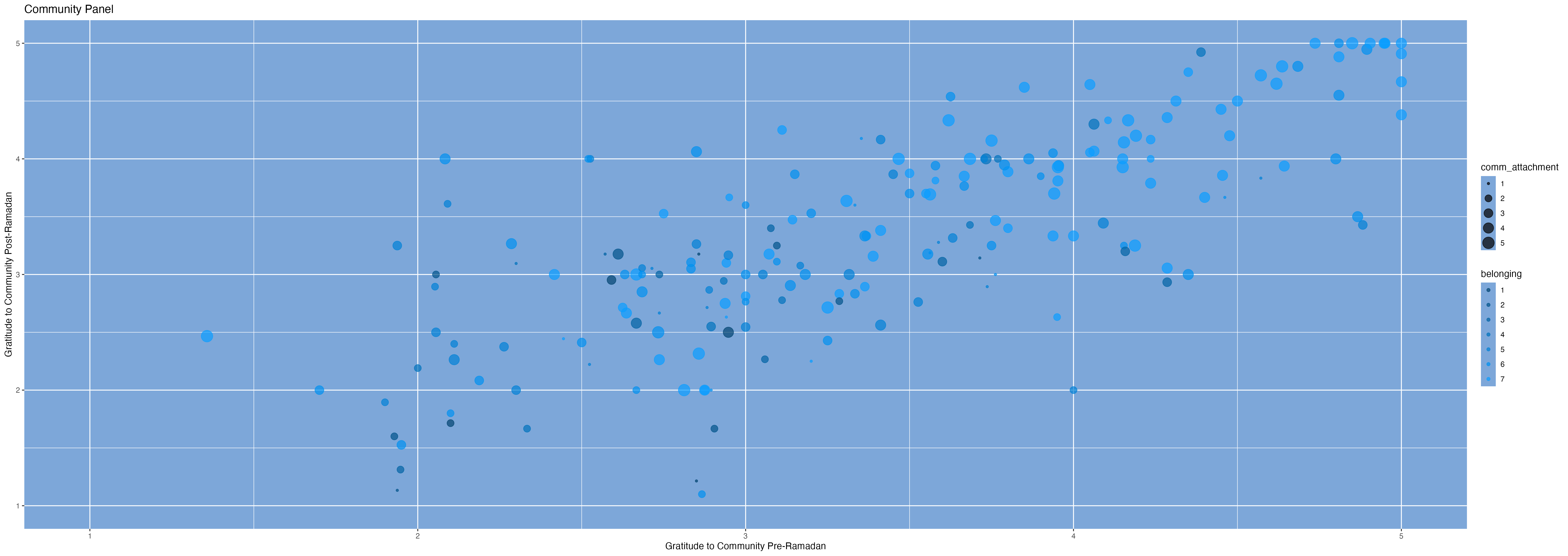
The panel on the opposite wall depicts a scatterplot of gratitude to Allah before and after Ramadan. The points are sized according to how connected an individual feels to Allah at a particular moment. They are colored according to self-reported measures of compassion. The lighter shades of indigo correspond to higher levels of compassion. The length of the beads hanging from the ceiling represent the average score in response to the question “How amazed by Allah are you right now?”
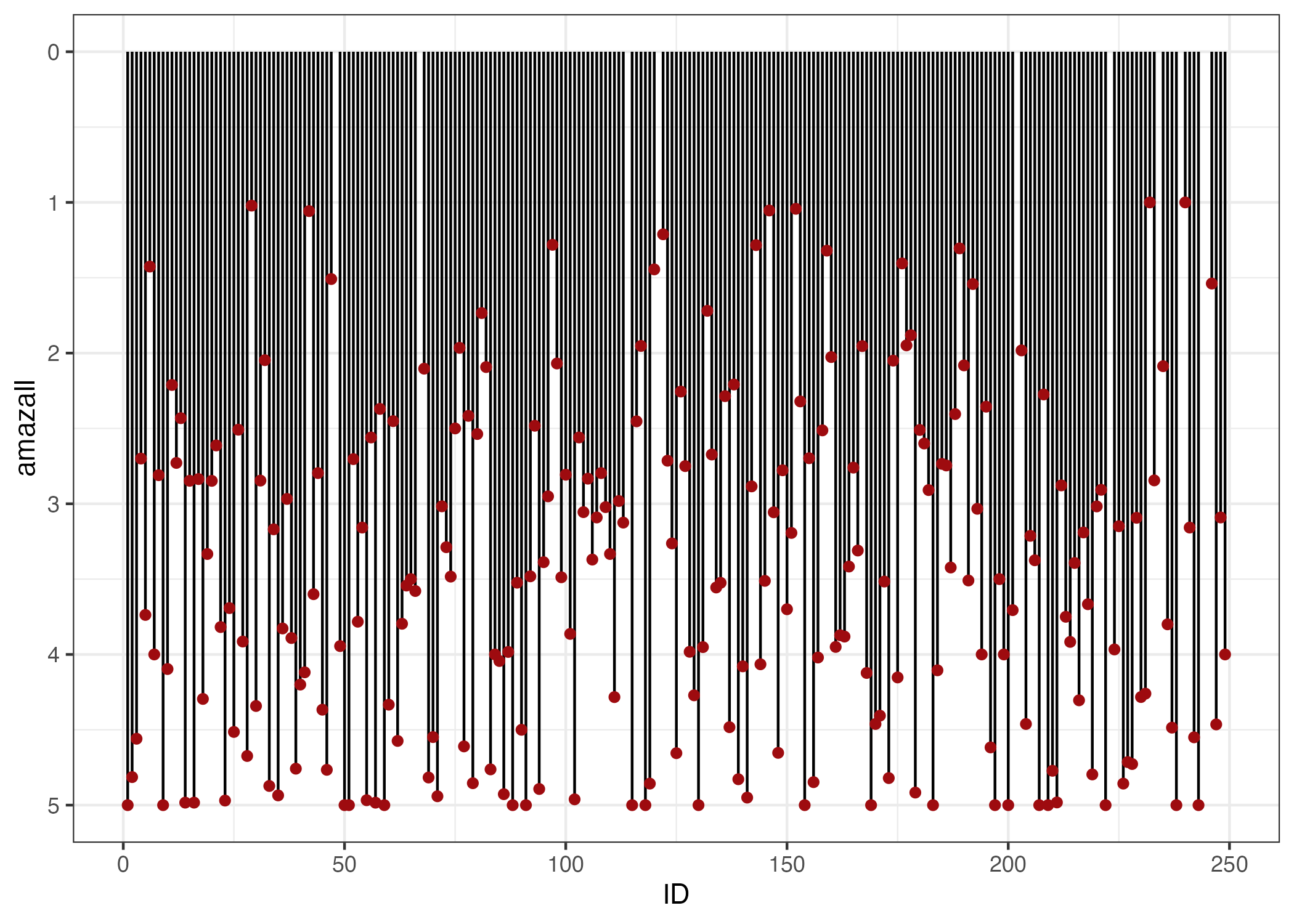
The central reed basket represents a violin plot of gratitude to Allah. It opens at the top with the large number of people reporting the maximum level of gratitude. The tufted rug is a violin plot of average scores of gratitude to community. The scores were averaged for each individual over the entire course of the data: before, during, and after Ramadan. The variations in the shape correspond to the number of people reporting that score for each gratitude level.
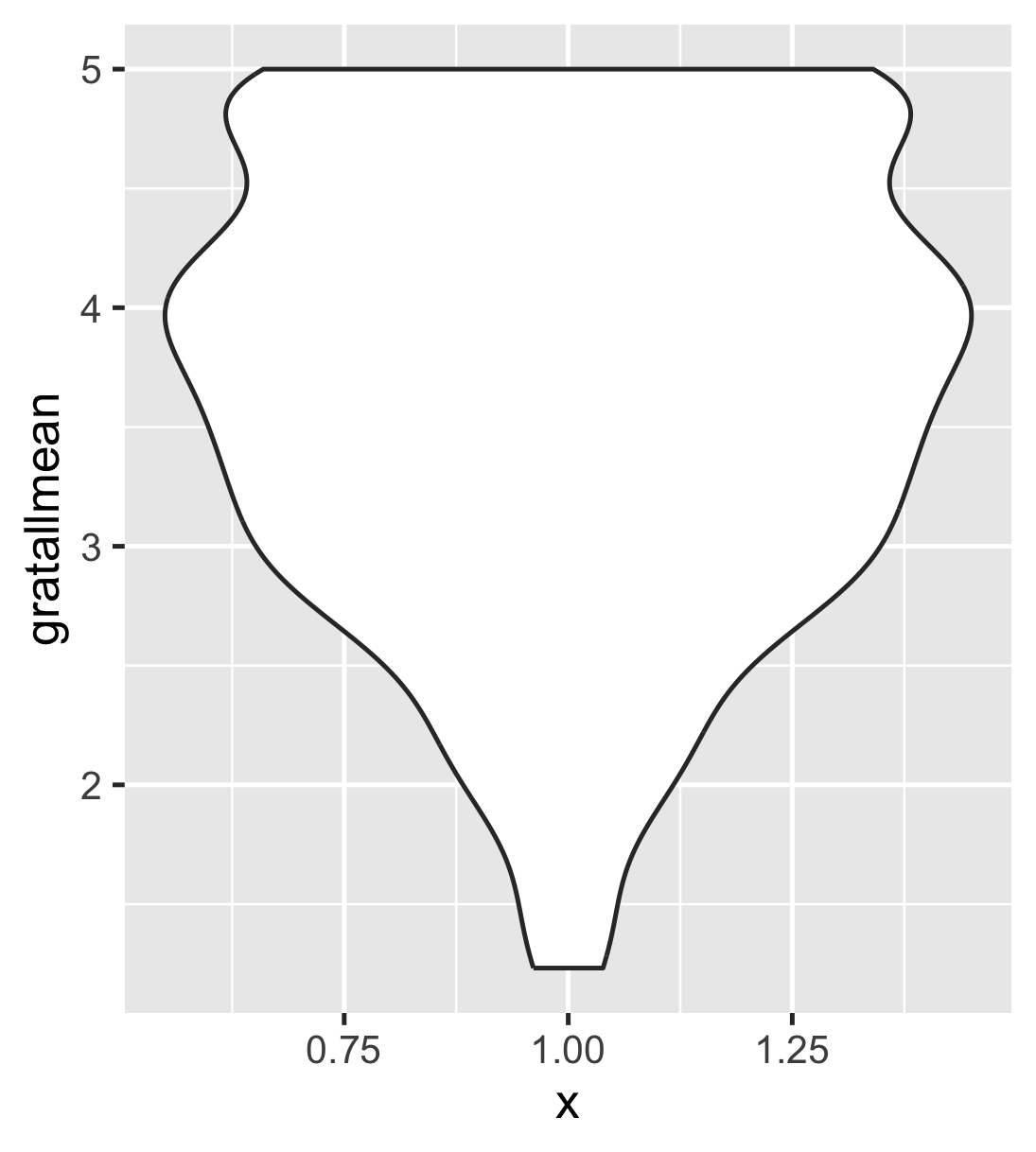
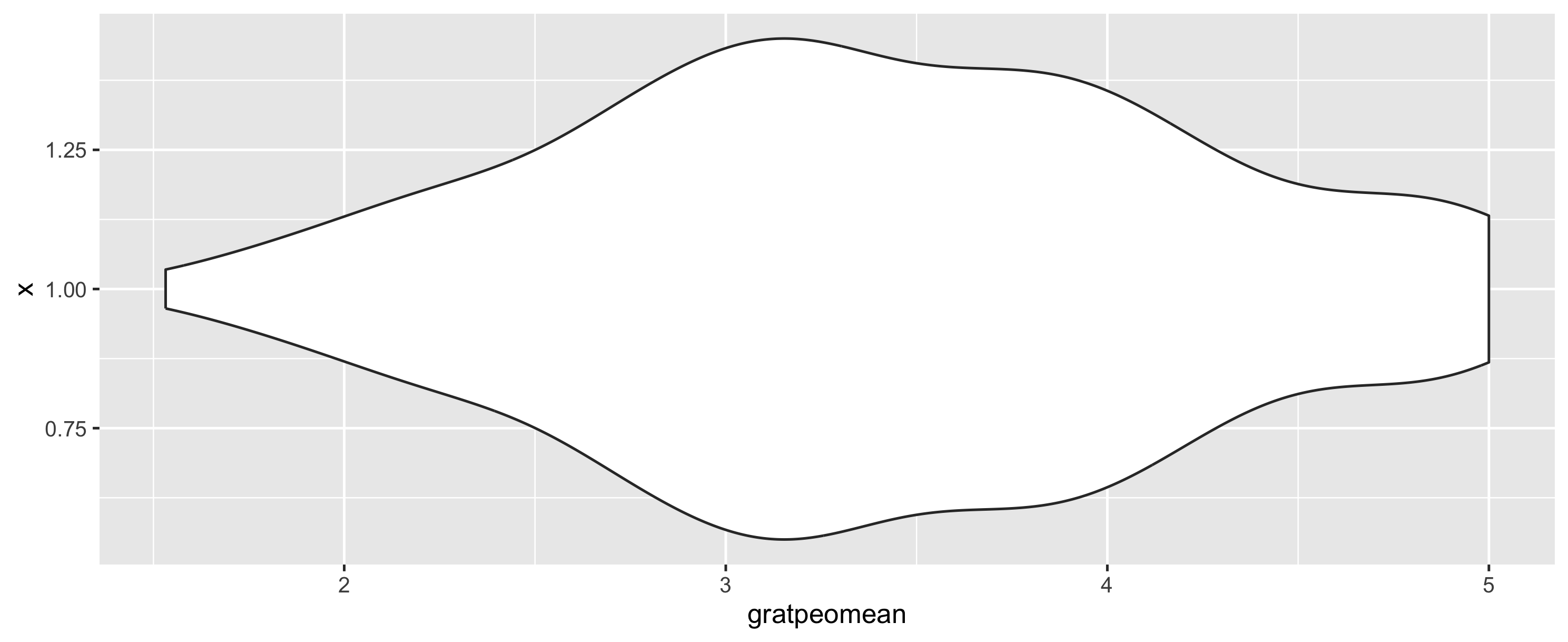
Keeping with the theme of exhibiting gratitude, sustainable design guided the creation of this installation. The design team took particular care to reduce environmental impact, conserve natural resources, and support fair labor practices. Material acquisition prioritized local and ethical suppliers that reduce transport emissions and support local economies.
Acknowledgements
This work was a joyful collaboration across our university and our communities. Our sponsors include the BRIGHTS Center led by Sarah Schnitker, PhD and the Baylor University Libraries, with particular thanks due to the Dean of Libraries Jeffry Archer, Eric Ames, and Sha Towers
Survey design: Merve Balkaya-Ince, PhD
Design Team: Ashley Gibbins · Ashley Lillian · Ariana Pena · Caroline Wells · Haodong Song · Hayley Koumjian · Joseph Mahan · Justin Demsky · Rhian Henley · Sarah Mosher, MFA · Tina Linville, MFA · Rachel Wilkerson, PhD · Zane Arterburn
Community Sewing Support: Abby Olsen · Anika Dachiraju · Anna Harrison · Anne Jeffrey, PhD · Audrey Yadon · Bethel Erickson · Ben Kim · Briana Newman · Calvin Harrison · Caroline Wilkerson · Charles Mosher · Eila Gerdhart · Elliot Jeffrey · Eliza Jeffrey · Erika Leal, PhD · Emily Martinka · Julia Mitchell · Katherine Sitton · Landon Bragg · Laura Himstedt · Lauren Fischbacher, PhD · Lori Reid · Mary Lauren Benton, PhD · Maverick Himstedt · Margaret Dickson · Natalie Barner · Olivia Jeffrey · Persephone Student · Robby Espano · Sarah Kate Bond · Sheridan Prejean · Tabitha Patterson · Voa Himstedt
Installation Support: David Lammers, MFA · Josh Raferty, MFA · Joshua Palmer · Morgan Ford Willingham, MFA
With special thanks to: Better Together · Abheet Sachdeva · Andre Baesa · Riya Rahman · Safa Salam · Susan Ismail · Zahid Masood Ahmed
References
Newman, D.B., Balkaya-Ince, M., Nelson, J., Tsang, J.A. and Schnitker, S.A., 2024. Feelings of gratitude to Allah and people and their associations with affect in daily life. Cognition and Emotion, pp.1-8.